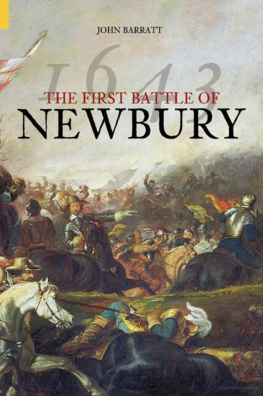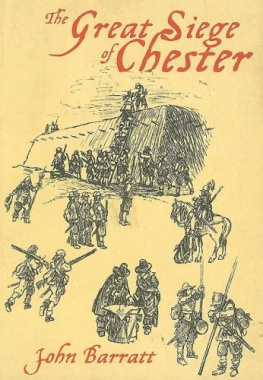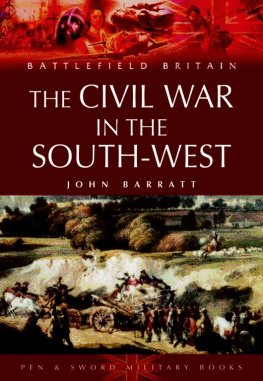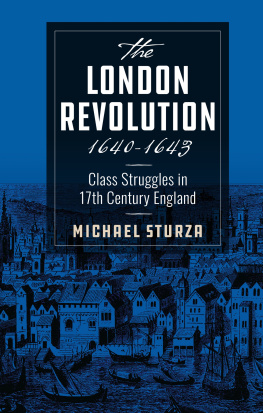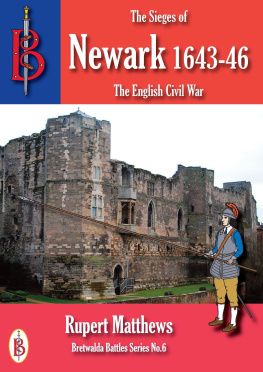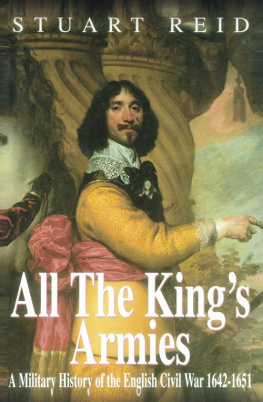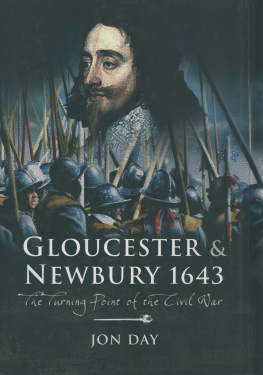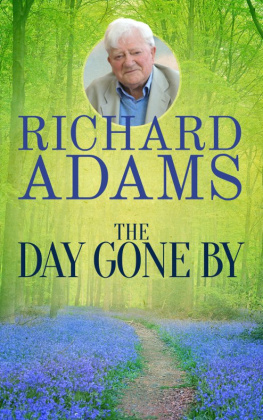John Barratt - The First Battle of Newbury 1643
Here you can read online John Barratt - The First Battle of Newbury 1643 full text of the book (entire story) in english for free. Download pdf and epub, get meaning, cover and reviews about this ebook. year: 2005, publisher: Tempus, genre: History. Description of the work, (preface) as well as reviews are available. Best literature library LitArk.com created for fans of good reading and offers a wide selection of genres:
Romance novel
Science fiction
Adventure
Detective
Science
History
Home and family
Prose
Art
Politics
Computer
Non-fiction
Religion
Business
Children
Humor
Choose a favorite category and find really read worthwhile books. Enjoy immersion in the world of imagination, feel the emotions of the characters or learn something new for yourself, make an fascinating discovery.
- Book:The First Battle of Newbury 1643
- Author:
- Publisher:Tempus
- Genre:
- Year:2005
- Rating:3 / 5
- Favourites:Add to favourites
- Your mark:
- 60
- 1
- 2
- 3
- 4
- 5
The First Battle of Newbury 1643: summary, description and annotation
We offer to read an annotation, description, summary or preface (depends on what the author of the book "The First Battle of Newbury 1643" wrote himself). If you haven't found the necessary information about the book — write in the comments, we will try to find it.
The First Battle of Newbury 1643 — read online for free the complete book (whole text) full work
Below is the text of the book, divided by pages. System saving the place of the last page read, allows you to conveniently read the book "The First Battle of Newbury 1643" online for free, without having to search again every time where you left off. Put a bookmark, and you can go to the page where you finished reading at any time.
Font size:
Interval:
Bookmark:
THE FIRST BATTLE OF
NEWBURY
THE FIRST BATTLE OF
NEWBURY
JOHN BARRATT

This edition first published 2005
The History Press
The Mill, Brimscombe Port
Stroud, Gloucestershire, GL 5 2 QG
www.thehistorypress.co.uk
This ebook edition first published in 2013
All rights reserved
John Barratt, 2005, 2013
The right of John Barratt to be identified as the Author of this work has been asserted in accordance with the Copyrights, Designs and Patents Act 1988.
This ebook is copyright material and must not be copied, reproduced, transferred, distributed, leased, licensed or publicly performed or used in any way except as specifically permitted in writing by the publishers, as allowed under the terms and conditions under which it was purchased or as strictly permitted by applicable copyright law. Any unauthorised distribution or use of this text may be a direct infringement of the authors and publishers rights, and those responsible may be liable in law accordingly.
EPUB ISBN 978 0 7524 9635 1
Original typesetting by The History Press
Contents
About the Author
John Barratt has written and lectured extensively on the English Civil War. His other books include The Battle for York: Marston Moor 1644, The Great Siege of Chester (both published by Tempus), Cavaliers: The Royalist Army at War 164246 and Cavalier Generals: King Charles I & His Commanders. He also writes regularly for Military Illustrated and The English Civil War Times. He lectures at the National Army Museum and the Royal Armories. He lives on Merseyside.
Preface
By the summer of 1643 the Royalist tide of success in the English Civil War was approaching its peak. The capture of Bristol, Englands second largest port, on 26 July climaxed a string of successes which had seen most of the west and north of England pass into the Kings control. The Royalists appeared to be on the verge of complete victory, with one more major reverse likely to bring the tottering Parliamentarian cause crashing down.
The Royalist Council of War hoped to make the capture of the town of Gloucester that catalyst. But the siege which followed, together with its succeeding campaign climaxing in the First Battle of Newbury (20 September), proved instead to be decisive in thwarting the hopes of the Cavaliers. Though the Kings supporters would enjoy other successes in the following weeks, their hopes of decisive victory faded into a military stalemate in which the growing power of the Parliamentarian-Scots alliance would eventually tip the scales inexorably in favour of the Kings opponents.
Though its significance was not fully grasped at the time, the First Battle of Newbury, variously regarded as indecisive, a Royalist failure or a narrow victory for the Parliamentarians under the Earl of Essex, was far-reaching in its effects. By avoiding a defeat which would have almost certainly have been fatal for his cause, Old Robin as Essex was known to his troops, not only saved his army but breathed decisive new life into the Parliamentarians.
Despite its importance and its ranking, in terms of numbers involved, as probably the third largest battle of the First Civil War, Newbury is one of the more neglected actions of the conflict. Indeed the battlefield itself lacks much of the visual interest of, for example, the other great engagements at Edgehill and Marston Moor.A large part of it is now covered by the spreading suburban housing of the modern town of Newbury, whose roads, named after such luminaries of the action as Cary, Villiers and Essex, represent the only visible reminders on much of the battlefield. Further dislocation has resulted in recent years from the development of the controversial Newbury bypass, while the only monument, a nineteenth-century memorial to the Earl of Falkland, stands marooned on a small grassy island amidst a busy road intersection some distance from the probable site of his death.
Only on the northern part of the battlefield, around the key high ground now known as Round Hill, and in some of its adjacent high-banked lanes, does the modern terrain still give an idea of its significance and appearance in 1643.
To add to the difficulties encountered by anyone attempting to reconstruct the course of what has been described as a monumentally confusing battle, extant contemporary accounts give little information regarding many of its details. Yet Newburys significance is such that it deserves much fuller treatment than is usually afforded to it.
As in previous books, I owe a great debt of gratitude to the painstaking researches of many others in the field of the English Civil War and of seventeenth-century military theory and practice. Among them are David Blackmore, David Evans, John Lewis, Les Prince, Stuart Reid, Keith Roberts, David Ryan, John Tincey and the late Brigadier Peter Young, whose enthusiasm and pioneering research did so much to spark the modern interest in the Civil Wars.
As usual, I owe a great deal to the long-suffering and invariably helpful staff of a number of libraries, including the Sydney Jones Library, University of Liverpool; Berkshire County Libraries and Record Office; the British Library, London, and the Bodleian Library, Oxford. At Tempus Publishing, Jonathan Reeve and Joanna Lincoln and their team have provided their customary outstanding support.
John Barratt, April 2003
Chronology
1642 | |
22 August | King Charles I raises Royal Standard at Nottingham, signalling formal outbreak of Civil War. |
23 October | Battle of Edgehill. Marginal victory for Royalists over Earl of Essex. |
12 November | Royalist advance on London checked at Turnham Green. |
9 December | Royalists go into winter quarters around temporary capital of Oxford. |
1643 | |
19 January | Battle of Braddock Down. Cornish Royalists under Sir Ralph Hopton defeat Parliamentarian invasion of Cornwall. |
1527 April | Essex takes Reading. |
16 May | Hopton defeats Parliamentarian army under Earl of Stamford at Stratton, decisively winning battle for Cornwall. |
18 June | Prince Rupert defeats Parliamentarian cavalry at Chalgrove. John Hampden mortally wounded. |
Essexs campaign in Thames Valley stalled by sickness among troops. | |
30 June | Northern Royalists under Earl of Newcastle win major victory over Parliamentarian army of Lord Fairfax at Adwalton Moor. |
5 July | Battle of Lansdown. Parliamentarian army under Sir William Waller narrowly defeats Western Royalists under Marquis of Hertford and Hopton. |
13 July | Battle of Roundway Down. Cavalry force under Lord Wilmot and Sir John Byron defeat Waller and relieve Hopton, besieged in Devizes. Queens munitions convoy reaches Oxford, enabling Oxford Army to begin active operations. |
26 July | Prince Rupert storms Bristol. |
4 August | Royalist Council of War decides to besiege Gloucester. |
10 August | Siege of Gloucester begins. |
19 August | Parliament requests City of London to provide troops from London Trained Bands to reinforce Essex in relief march. |
23 August | Trained Bands set out from London. |
Font size:
Interval:
Bookmark:
Similar books «The First Battle of Newbury 1643»
Look at similar books to The First Battle of Newbury 1643. We have selected literature similar in name and meaning in the hope of providing readers with more options to find new, interesting, not yet read works.
Discussion, reviews of the book The First Battle of Newbury 1643 and just readers' own opinions. Leave your comments, write what you think about the work, its meaning or the main characters. Specify what exactly you liked and what you didn't like, and why you think so.

